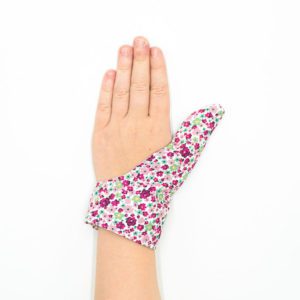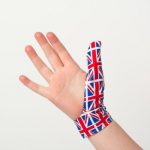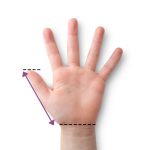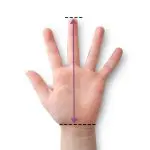Hair twirling
You have probably heard of hair twirling and may even know someone with the habit, but what causes it and how can it be stopped?
What is hair twirling?
Hair twirling is categorised into a group of behaviours called fidgets. Other common fidgets include nose picking, nail biting (typically associated with stress), head banging, and of course, thumb sucking. Many children use a number of these fidgets; a child may often develop both a hair twirling and thumb sucking habit for example.
Hair twirling refers to the act of wrapping your hair around your finger and then doing a repeated circular motion.
A harmless habit? Sadly, in some cases it’s not. As with any fidgety behaviour, there is a psychology behind the habit. Hair twirling is less physically harmful than hair pulling – known as trichotillomania. If your child starts to pull their hair you should speak with a doctor to find out the specific causes.
With hair twirling, though not as serious as hair pulling, temporary damage can still be caused to hair. It is best to avoid that if at all possible!
So, why exactly do toddlers twirl their hair or engage if other fidgets? Big events like a new sibling, moving to a new home or changes in childcare all may trigger hair twirling and other self-soothing behaviours. Toddlers often develop this habit before bedtime, when they are anxious or as a way to wind down.
There is some evidence that hair twirling can be a symptom of conditions like autism, anxiety, OCD and ADHD. Only a medical professional can diagnose these conditions. It is important to remember that there would always be other symptoms alongside hair twirling.
Problems caused by hair twirling
A child occasionally twirling their hair is unlikely to cause any damage, but if they develop a long-term habit there can be a number of problems.
One of the most common effects of long-term hair twirling is hair breakage. Hair can be fragile and can only cope with a limited amount of repeated twirling. Strands can grow weak and can ultimately fall out, leading to hair loss and even bald patches. Hair could also become tangled and knotted and look very unsightly.
We also know that hair twirling is often accompanied by thumb sucking which brings with it a number of other problems, specifically poor jaw development, overbites, misaligned teeth and the increased risk of finger and thumb infections.
Thumb and finger sucking habit?
Help your child prevent the problems that prolonged and aggressive thumb and finger sucking can cause Buy NowMost concerning of all, hair twirling could act as a gateway to hair pulling which can have more serious and even permanent effects.
The good news with hair twirling is that the damage will typically only be temporary and can be reversed if stopped in the early stages. So, how exactly can it be stopped?
Stopping my child hair twirling
Take it slowly: It is important to not be too forceful with your child. Yes, you may be frustrated or concerned with their hair twirling. But if your child is fidgeting because of anxiety, it is not helpful to scold them. If a child feels they are being forced to quit the habit, they are more likely to continue; it could even make things worse.
Acknowledge: Rather than drawing attention to the behaviour as a negative habit, it is better to just acknowledge it in a neutral, matter of fact way and show your child that you are willing to understand why they are fidgeting.
Use up energy: Children typically have tons of energy, and it can be helpful to direct them to other activities – running, dancing or playing a game for example. This can release pent-up energy and help take their mind of the urge to twirl their hair.
Find a replacement: There are many replacements you could give to a naturally fidgety child. Whether a soft blanket or a stuffed animal, you can provide a safer and less harmful alternative to keep their hands busy.
Haircut: This may not be for everyone, but some parents report that getting a shorter haircut for their child can make it less tempting to hair twirl.
Stop thumb sucking: If your child also sucks their thumb, as many hair twirlers do, you could try a Thumbsie® to help stop the sucking. By limiting their ability to suck their thumb, you may find that their hair twirling habit also disappears.

Find the cause: The best advice of all is to find the root cause and address it. Times of unexpected change can often trigger anxiety in a child: a new sibling, weaning or a change in house or caregiver are common reasons. Explaining to your child what is happening and why it is a good thing – you’re going to be a big brother or we’re moving closer to grandma, for example – can help relieve a lot of anxiety.
How can a Thumbsie® help?
Playdough, a doll and various fidget devices can all help to keep a child’s hands occupied and take their mind away from hair twirling. But one of the most effective of all products is the Thumbsie®.
Thumbsies® are handmade fabric thumb guards that fit over the thumb like a glove for the prevention of thumb sucking in children.
The glove is secured around the wrist using Velcro®. The glove comes in 5 different sizes, and it has a simple measuring guide which helps them to fit well (they fit on either hand).
Thumbsies® are suitable for boys and girls from the age of three years. Children can wear them all day as they should not restrict them playing, writing or painting. They can even wear them to school.
Best of all, we have over 40 different designs from animals to sports to cars and flowers. Whether your child loves unicorns, rabbits, superheroes or football we will have the perfect Thumbsie® for them.
Thumbsies® have been proven time and again to be a hugely successful way of stopping thumb sucking. We have won multiple awards and have a fantastic 4.8 out of 5 on Google Reviews.
But there is also growing evidence that they can help to stop hair twirling, too, as this testimonial from a very happy parent proves:
“I just wanted to say a huge thank you for creating a product that actually works! My daughter is 3.5 years old and has sucked her thumb since she was 3 months old.
“With the opposite hand to the one she sucks; she’s been pulling out her hair leaving her with only half a head of hair.
“I have tried for so long to get her to stop but as she does this in her sleep, we were at the end of trying things. Until we found the Thumbsie!
“Two weeks and she’s completely stopped, no hair pulling, no thumb sucking. I could literally cry with happiness. We still put it on at night to just beat the habit completely but what a difference. Her hair is growing, and she looks likes she’ll have a little girls hair style soon instead of half a head of hair.”
And Jo Bates, the founder of Thumbsie, responded to this wonderful testimonial by saying:
“I was really thrilled to receive this lovely feedback. I’m delighted to know that Thumbsies® are not only helping children stop thumb sucking, but that they can also have a beneficial impact on other long-term habits.
“Experts say that finding a replacement activity for a child’s hands is one way of limiting hair twirling. It appears a Thumbsie® can be one good option!
“Hair twirling, like thumb sucking, can be a troubling habit if it continues for a long time. To be able to help one of our customers quit both habits is truly wonderful.”
One of the most heart-warming pictures Jo has ever received was the photo of this little girl, complete with a full head of gorgeous curly hair, several months after the hair twirling had stopped. A sure sign of a habit well and truly broken!
Another mum on an Etsy review said
My daughter suffers from Trichotillomania, where she pulls out her eyelashes (consciously and subconsciously). Amongst the many methods we are currently exploring to help distract her and divert this action, we bought 2 of these thumb covers for her to wear in the house and in bed. She got to choose the pattern she wanted, and doesn’t mind wearing them at all. They are comfortable and she can still play, read etc when wearing them (and most importantly can’t pull out eyelashes when wearing them). We still have a way to go before this disorder is completely in control, but these thumb covers have been amazing and I believe an integral part of her recovery journey.
What next?
For many, hair twirling is a passing phase but there are a few things to take into consideration:
- If your child progresses to hair pulling, speak with a medical professional as this can have more long-term impact.
- Monitor the state of your child’s hair and if there are weak strands or you fear that the habit is becoming an obsession, then try to break the habit.
- Be patient and understanding; think about using replacement activities and offer reassurance to your child.
- Try a Thumbsie®. You never know, you may end up breaking two habits – hair twirling and thumb sucking – all at the same time!
Problems with Thumb Sucking
You may be concerned if it is harmful, at what age should they stop or what could be the long-term effects if they don’t stop.Frequently Asked Questions
Looking for an answer? Go to our FAQ pagehow thumbsie helps families
Multi-award winning Thumbsie® was created from a real need when Jo Bates’s, founder Thumbsie Ltd, third daughter Isabel needed help to stop thumb sucking!




















Connect with us